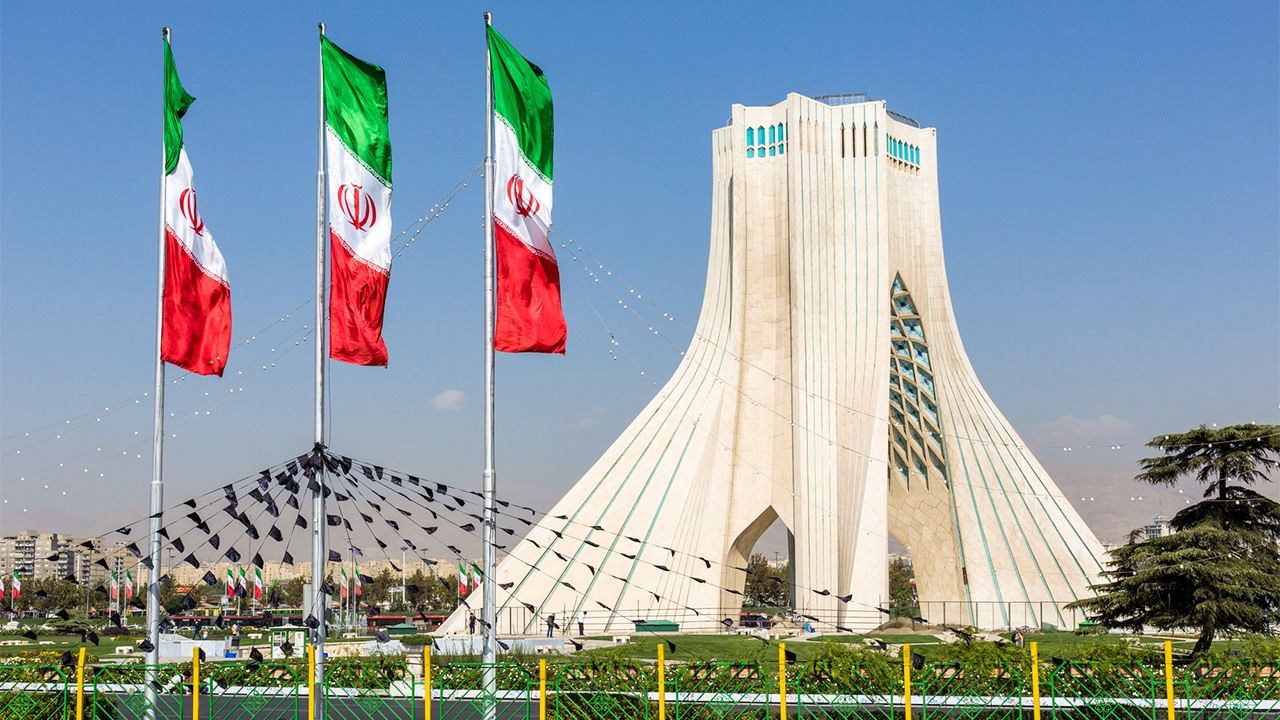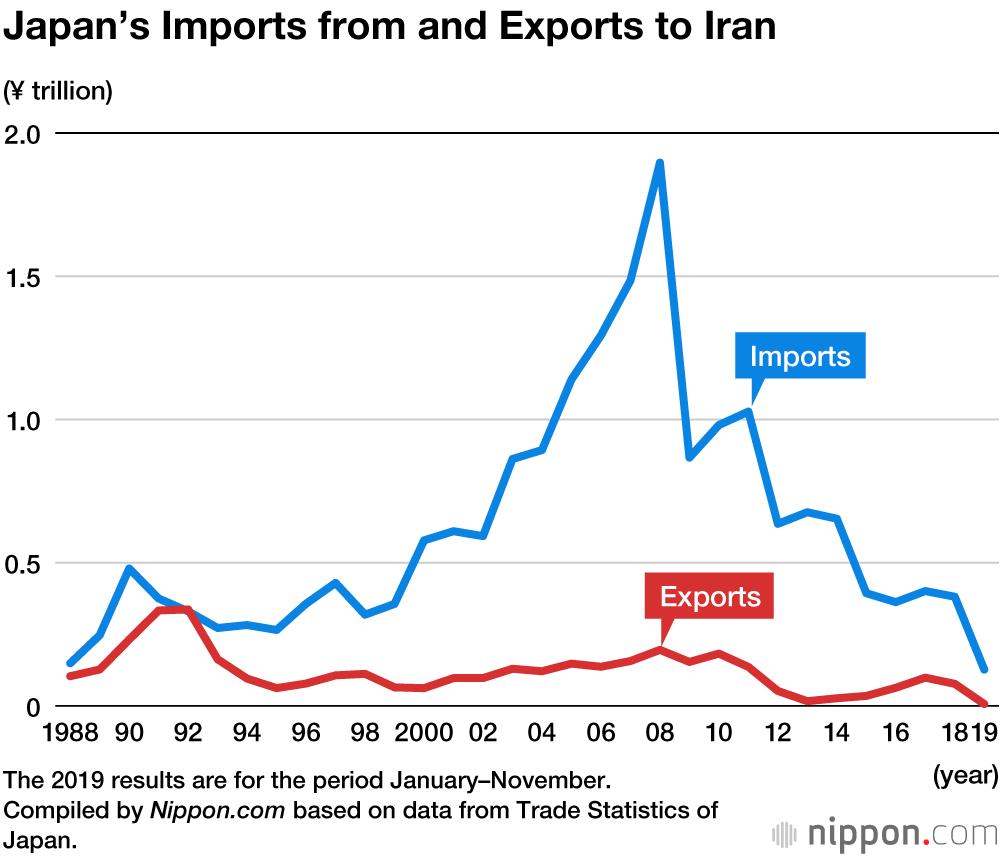
Japanese Trade with Iran Under Pressure
Politics- English
- 日本語
- 简体字
- 繁體字
- Français
- Español
- العربية
- Русский
Resource-poor Japan has made great efforts to forge good relationships with oil producing countries in the Middle East. Iran, boasting the world’s fourth-largest crude oil reserves and the world’s largest natural gas reserves, has long been an important supplier. However, the US economic sanctions placed on Iran due to suspected nuclear weapons development are affecting the trade relationship between Japan and Iran.
In 2000, Japan acquired priority in negotiation rights for development of the Azadegan oil field, which has an estimated 26 billion barrels in reserves. Expectations for a Japanese-developed oil field were high; however, US opposition led to negotiations faltering. In 2004, Japan finally entered an agreement with the National Iranian Oil Company, making a 75% investment in development of Azadegan. Tightening US economic sanctions on Iran, however, meant an increased risk of the company being targeted for sanctions, so in 2006 Japan reduced its stake to 10%, and then in 2010 withdrew completely.
Japan is very much a net importer in its trade relationship with Iran. Imports from Iran in 2018 totaled ¥380 billion, of which almost all were crude oil and other mineral fuels. Japanese exports to Iran totaled ¥77 billion, consisting mainly of vehicles and general machinery.
As a major Middle East country with a population of just over 80 million, Iran’s huge potential market has drawn interest from countries across Europe. In July 2015, six countries lifted economic sanctions on Iran following the Joint Comprehensive Plan of Action, the deal between Iran and world powers aimed at ending its development of nuclear weapons, and Japan also began planning to expand trade, which had been in stagnation. However, US President Donald Trump withdrew the United States from the deal in May 2018, imposing new sanctions that disrupted the Iranian economy. The US killing of Qasem Soleimani, an Iranian general, on January 3, 2020, has brought about a fresh spike in tensions that could affect the wider global economy.
The trade results for 2018 show that the amount of Iranian oil imported has shrunk to 4.2% of Japan’s total crude oil imports. Nonetheless, the escalation in political and military uncertainty in the Middle East puts Japan in a critical position, given its energy dependence on the region.
Main Events of Japan-Iran Relations
| 1929 | A Japanese legation is established in Iran. |
| 1958 | The Shah of Iran, Mohammad Reza Pahlavi, visits Japan. |
| 1960 | The crown prince and princess of Japan (the current emperor emeritus and empress emerita) visit Iran. |
| 1978 | Prime Minister Fukuda Takeo visits Iran. |
| 2000 | President Mohammad Khatami is the first Iranian president to visit Japan (the first head of state to visit since 1958), where he holds talks with Prime Minister Mori Yoshirō. Japan acquires priority in negotiation rights for the Azadegan oil field. |
| 2004 | Inpex Corporation and the National Iranian Oil Company enter an agreement to develop Azadegan. The Japan side contributes 75% of the total investment of $2 billion. |
| 2006 | The UN Security Council passes a resolution demanding that Iran suspend its uranium enrichment program and warns of economic sanctions. Japan reduces its Azadegan stake from 75% to 10%. |
| 2008 | Prime Minister Fukuda Yasuo and President Mahmoud Ahmadinejad hold a summit meeting in Rome (the first summit since 2000). |
| 2010 | Japan withdraws completely from development of the Azadegan oil field. |
| 2013 | Prime Minister Abe Shinzō and President Hassan Rouhani hold talks in New York (as of 2018, these summit meetings in New York have been held for six consecutive years). |
| June 2019 | Prime Minister Abe visits Iran and talks with President Rouhani and Iran’s supreme leader Ali Khamenei (the first such visit since 1978). |
| December 12, 2019 | President Rouhani becomes the first Iranian leader to visit Japan since President Khatami in 2000. |
| December 27, 2019 | The cabinet decides to send Maritime Self-Defense forces to gather information for ensuring security of navigation for Japanese vessels in the Middle East. Deployment is scheduled for February 2020. |
| January 3, 2020 | A US airstrike kills General Qasem Soleimani, who is considered a national hero in Iran. |
| January 8, 2020 | Iran launches a missile attack on two US bases in Iraq. |
| January 8, 2020 | President Trump states that he does not want to use military force in reprisals against Iran. |
Compiled by Nippon.com based on data from the Ministry of Foreign Affairs website and various news reports.
(Originally published in Japanese in 2018; updated on January 8, 2020. Banner photo: Tehran's Azadi Tower, a monument built in 1971 to mark 2,500 years of the Imperial State of Iran. © Pixta.)
